Imagine stepping into your backyard and being instantly transported to a serene oasis of your own creation. Whether you’re a novice just starting to dip your toes into the world of outdoor design or a seasoned homeowner seeking fresh inspiration, “15 Relaxing Spots Ideas for Your Next Project” is your essential guide to transforming any outdoor space into a personal retreat. This list is packed with innovative ideas that promise to elevate your outdoor living experience and deliver a slice of paradise right at your doorstep.
Creating beautiful outdoor spaces is more than just aesthetic appeal; it’s about enhancing your lifestyle and well-being. From cozy nooks perfect for quiet reflection to vibrant areas ideal for entertaining, each idea offers practical steps to maximize your yard’s potential. Dive into this guide with confidence, knowing that these carefully curated concepts will help you craft the outdoor haven of your dreams, making every moment spent outside a joyful escape.
Incorporate Hammocks for Leisure Nooks
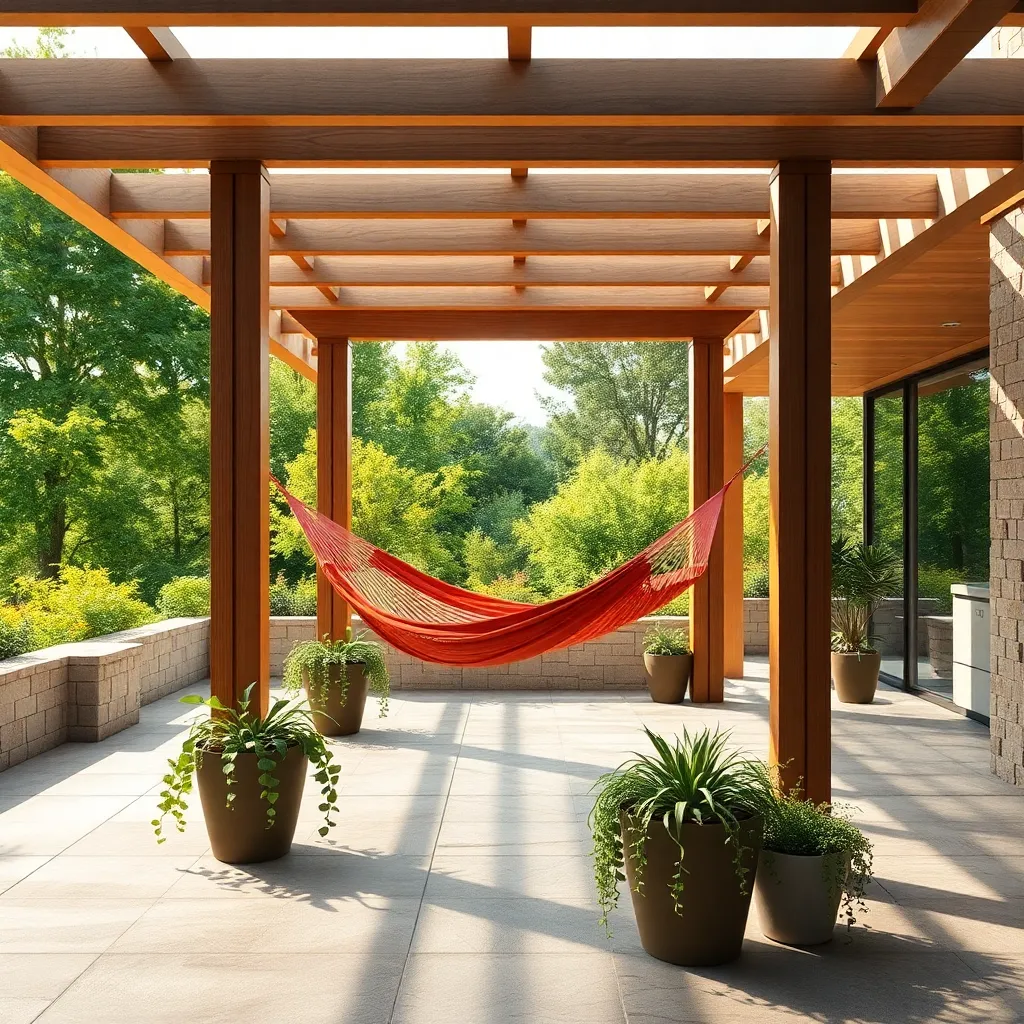
Adding hammocks to your outdoor space can create inviting leisure nooks perfect for relaxation. Begin by selecting a sturdy area, like between two mature trees or on a purpose-built wooden frame, to securely hang your hammock. Choose weather-resistant materials such as polyester or quick-dry cotton to withstand the elements and prolong your hammock’s life. For beginners, a simple rope or fabric hammock is easy to install, while more advanced DIYers might explore options like crocheted or quilted designs for added comfort and aesthetics.
Consider the surrounding elements to enhance your hammock nook, such as incorporating soft lighting with solar-powered lanterns or string lights for evening use. Add outdoor cushions or a small side table for convenience and style, using treated wood or rust-resistant metal to ensure durability. For those looking to elevate their design, consider installing a retractable canopy or pergola for shade and privacy, ensuring it complements the overall theme of your garden or patio area. This thoughtful integration of form and function will create a personal retreat right in your backyard.
Craft Cozy Fire Pit Corners
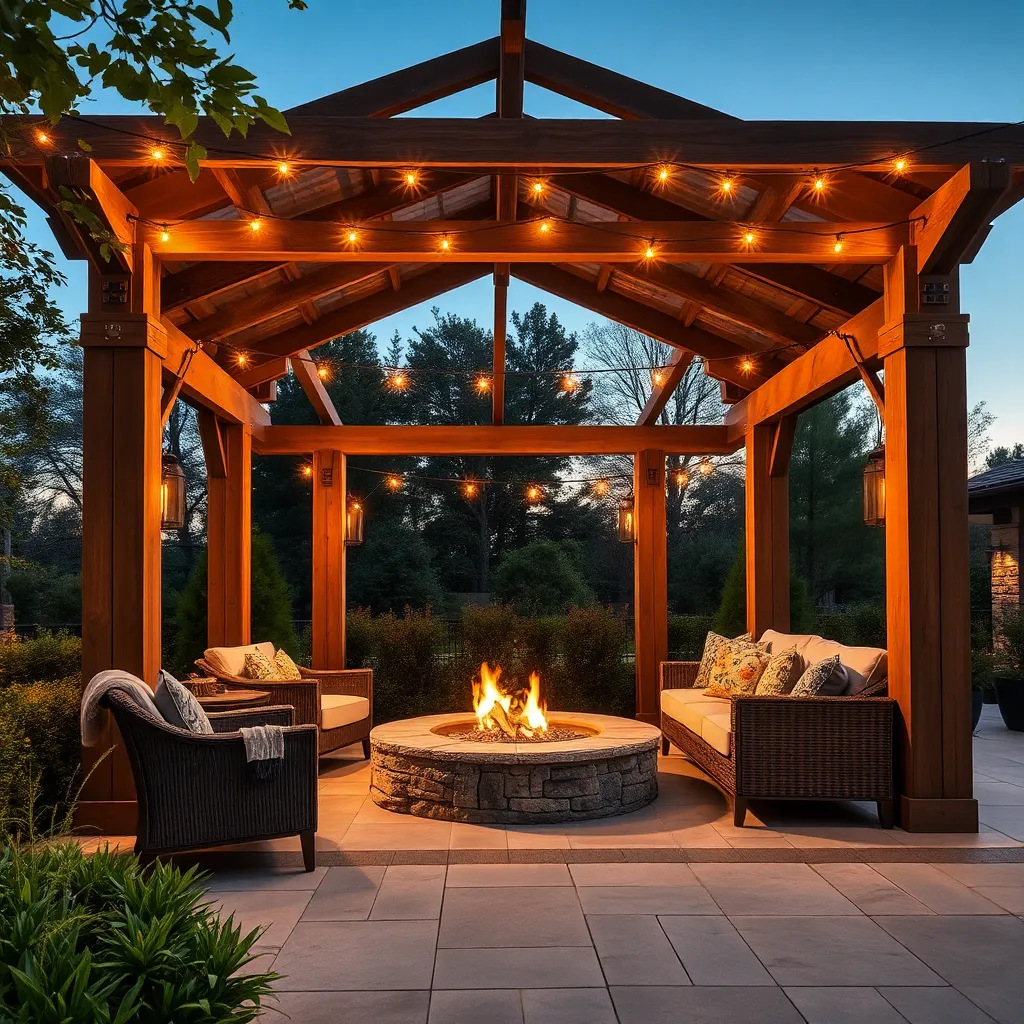
Transform your backyard into a warm and inviting retreat by crafting cozy fire pit corners. Begin by choosing a location that is both safe and functional—ideally, a spot that is at least 10 feet away from any structures or overhanging trees. Use durable materials like stone or brick for the fire pit itself, ensuring that it’s built to withstand high temperatures and weather elements. For a basic setup, a 3 to 4-foot diameter pit works well, providing enough space for a comfortable fire without overwhelming the area.
Enhance the ambiance by incorporating comfortable seating options like weather-resistant Adirondack chairs or built-in benches with cushioned pads. Consider adding personal touches such as string lights or lanterns to illuminate the area and create a welcoming glow. For a touch of sophistication, install a gravel or flagstone patio around the fire pit, which helps define the space and adds an aesthetic appeal. If you’re an experienced DIYer, consider building a pergola above the seating area to add a layer of shelter and charm, ensuring your fire pit corner is both functional and stylish throughout the seasons.
Utilize Pergolas for Shaded Retreats
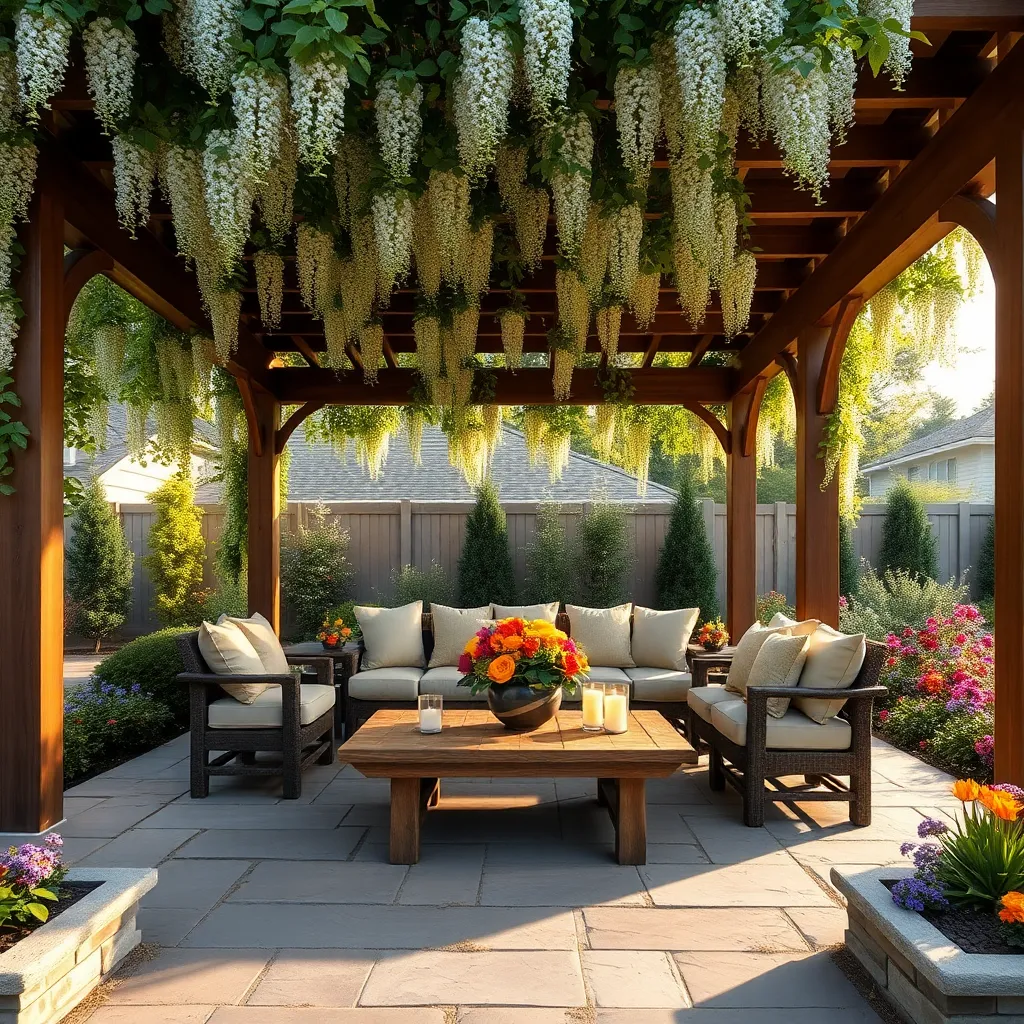
Transform your backyard into a relaxing oasis by utilizing pergolas for shaded retreats. These versatile structures not only provide a delightful escape from the sun but also add architectural interest to any outdoor space. When selecting materials, consider using weather-resistant options like cedar or pressure-treated wood for durability. For a budget-friendly alternative, you might opt for vinyl or aluminum, which require less maintenance. Position your pergola carefully to maximize shade and enhance the view, aligning it with existing garden paths or patios.
Incorporate design elements like climbing plants or retractable canopies to customize your pergola and enhance its functionality. Wisteria, jasmine, or climbing roses can be trained to weave through the beams, offering additional shade and a beautiful display. If you’re ready for an advanced project, consider adding built-in seating or lighting to extend the use of your pergola into the evening. Standard pergola dimensions typically range from 10×10 to 12×16 feet, but adjust these to fit your space and needs. By taking these steps, you’ll create a peaceful, inviting retreat right in your backyard.
Design Secluded Garden Hideaways
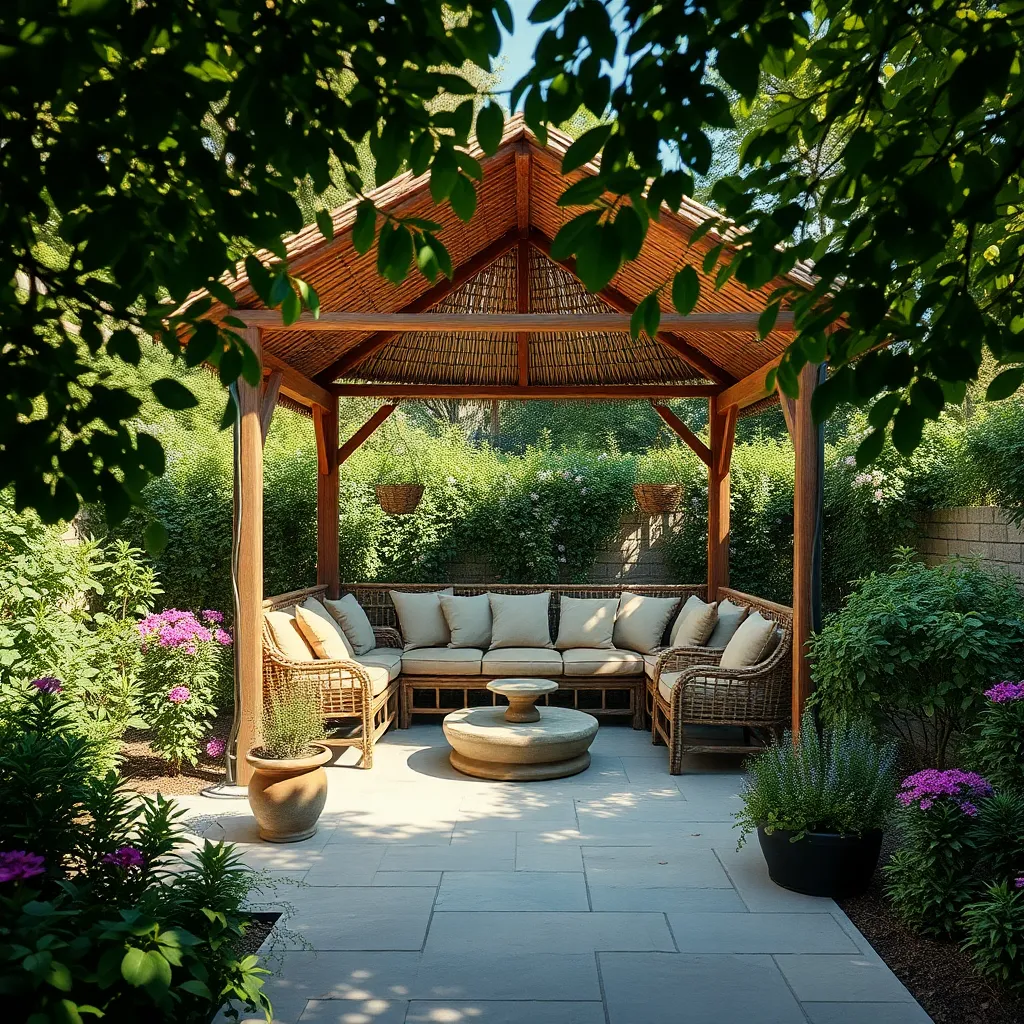
Transforming a corner of your garden into a secluded hideaway can provide a serene escape from daily life. Start by selecting a location that offers natural privacy, like the shadow of a tree or a nook surrounded by shrubbery. Consider using materials such as reclaimed wood or bamboo to build a small, intimate structure. These materials not only blend seamlessly with natural surroundings but are also sustainable choices. Add a simple roof for protection against the elements, or let climbing plants like clematis or ivy grow over a lattice framework for a more organic canopy.
For those with a bit more experience, think about incorporating additional features such as built-in seating or a small water feature to enhance the atmosphere. Ensure seating is comfortable by adding plush cushions made from weather-resistant fabric. If space allows, install a small fountain or birdbath to attract wildlife, adding to the sense of tranquility. Lighting can extend the use of your hideaway into the evening; consider solar-powered lanterns or fairy lights for an eco-friendly option. With these thoughtful touches, your garden hideaway can become a cherished retreat that beckons you to relax and unwind.
Set Up Tranquil Water Features
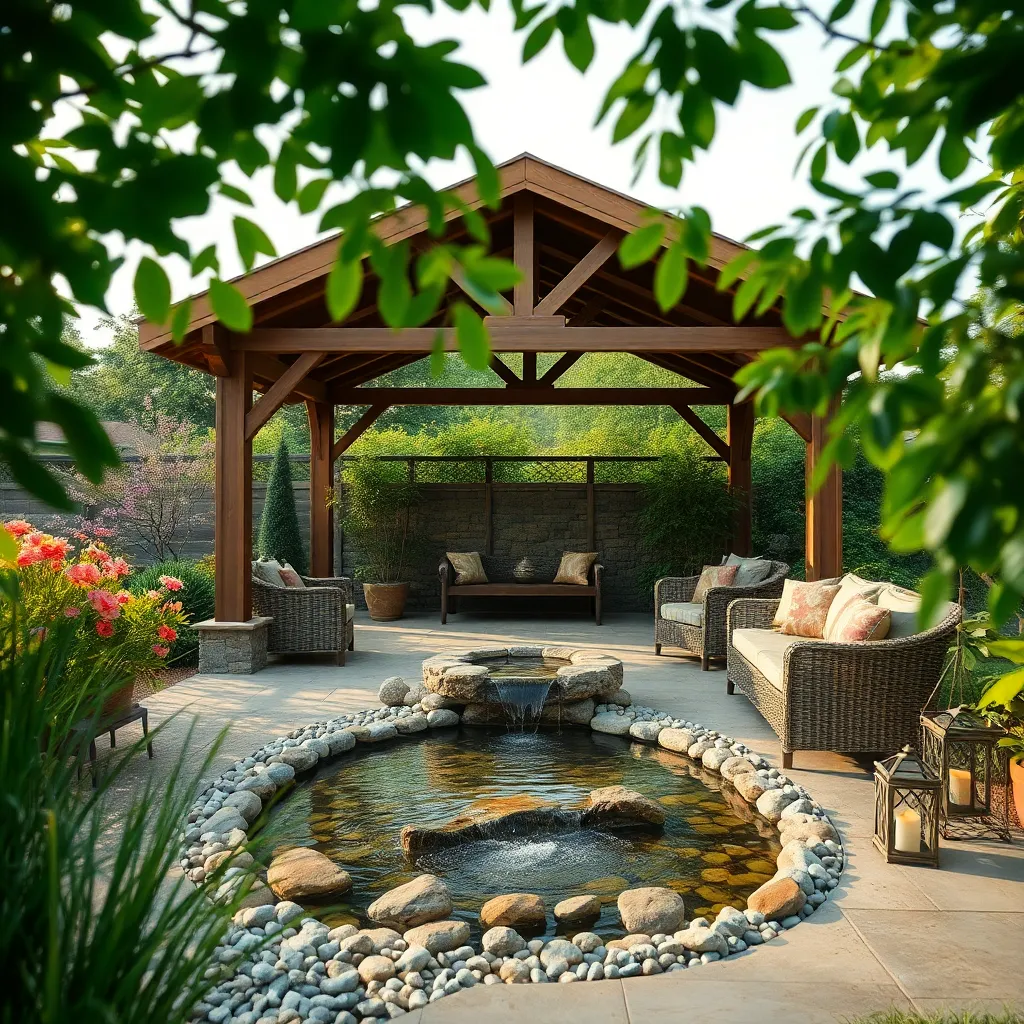
Integrating a tranquil water feature into your outdoor space can dramatically enhance its serenity and appeal. Start with a simple fountain if you’re new to water features; you can find premade kits at most garden centers. Position it near a seating area to enjoy the soothing sounds of flowing water. For a more customizable option, consider a small pond. Use a liner to define the space, and add stones or aquatic plants like water lilies to create a natural look. Make sure to include a filtration system to keep the water clear and healthy.
For those ready to tackle more advanced projects, a cascading waterfall can be an impressive focal point. Use natural stone or slate to create tiers for the water to flow over, giving it a gentle, trickling sound. Ensure the design includes proper waterproofing, such as a rubber liner, to prevent leaks. Incorporating a solar pump can make this feature more sustainable and energy-efficient. Regardless of the option you choose, always plan for easy access to power sources and water connections. This careful planning ensures your water feature will remain both functional and beautiful for years to come.
Create Intimate Lighting Ambiences
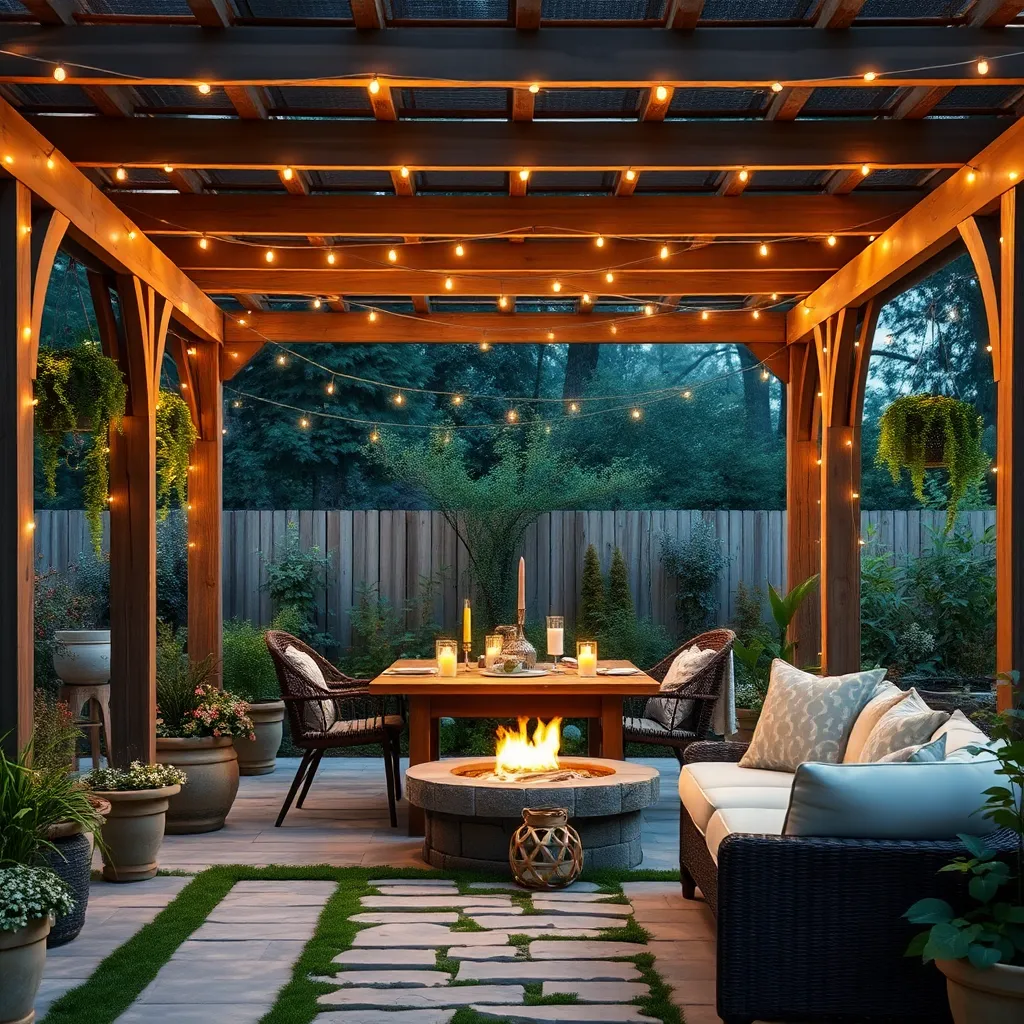
Creating an intimate lighting ambience starts with selecting the right type of lighting fixtures. Consider using solar-powered lanterns, string lights, or LED candles to add a warm glow without extensive wiring. For beginners, string lights are an easy option to drape over pergolas or along fence lines, instantly transforming the space. If you’re more experienced, incorporate dimmable LED fixtures in strategic spots to allow control over the mood and intensity of the light. This approach not only enhances the aesthetic appeal but also makes your outdoor area more functional during evening hours.
To further enhance the ambience, focus on layering different light sources to create depth and interest. Use spotlights to highlight specific features like a beautiful tree or a water feature, while softer lights can illuminate pathways or seating areas. Choose weather-resistant materials such as stainless steel or powder-coated finishes to ensure longevity and aesthetics. For those looking to add a touch of sophistication, consider installing recessed floor lights on decks or patios for a sleek, modern effect. These techniques will make your outdoor shelter a cozy retreat, perfect for relaxing or entertaining.
Implement Natural Privacy Screens
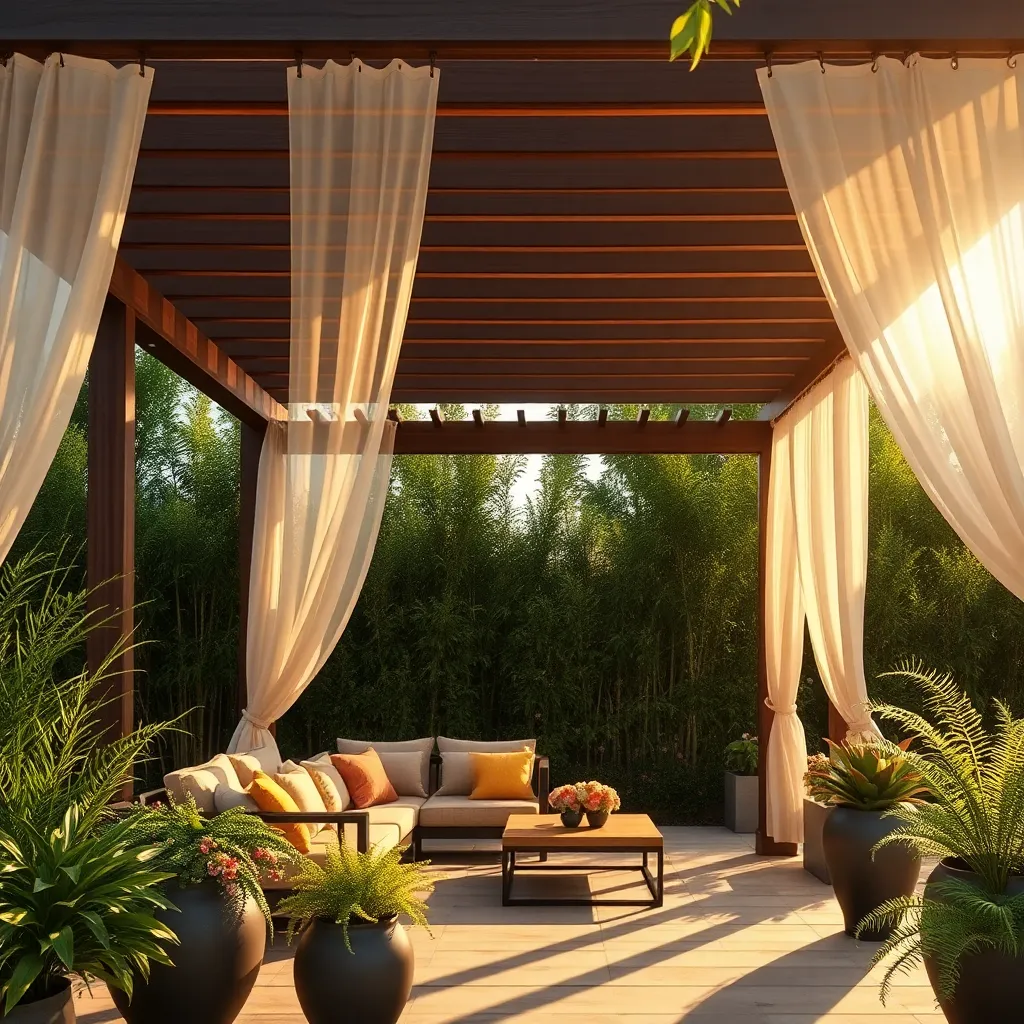
To create a relaxing and private outdoor retreat, consider implementing natural privacy screens using fast-growing plants like bamboo, hedges, or climbing vines. Bamboo is a popular choice due to its rapid growth rate and dense foliage, which provides excellent privacy. Opt for clumping varieties over running bamboos to avoid invasive spread. For a more traditional look, plant a row of evergreen shrubs such as arborvitae or boxwood, spacing them approximately 2-3 feet apart for a lush, continuous barrier.
For a creative twist, construct a vertical garden using climbing plants like clematis or honeysuckle, which can be trained to grow on trellises or pergolas. Choose weather-resistant materials for your support structures, such as treated wood or metal, to ensure longevity. To enhance growth and coverage, regularly prune and guide the plants to fill in gaps and encourage fullness. These natural screens not only provide seclusion but also add texture and color to your outdoor space, making it an inviting and tranquil haven.
Select Soothing Color Palettes

Creating a soothing color palette for your outdoor shelter can significantly enhance its relaxing atmosphere. Start with choosing neutral base colors like soft grays, beiges, or gentle greens to set a calming foundation. These colors work well with most outdoor settings and allow you to incorporate natural elements seamlessly. For a more cohesive look, consider using materials like weather-resistant fabric for cushions and drapes, ensuring they complement the color scheme while standing up to the elements.
Introduce accent colors through accessories such as throw pillows, rugs, or even potted plants. Use shades like muted blues, soft pinks, or earthy terracottas to add interest without overwhelming the space. For a more advanced touch, experiment with ombre effects or layered hues that gently transition from one color to another, creating visual depth. This can be achieved by painting walls or using fabric panels in varying shades, offering a sophisticated and serene aesthetic.
Integrate Comfortable Outdoor Seating
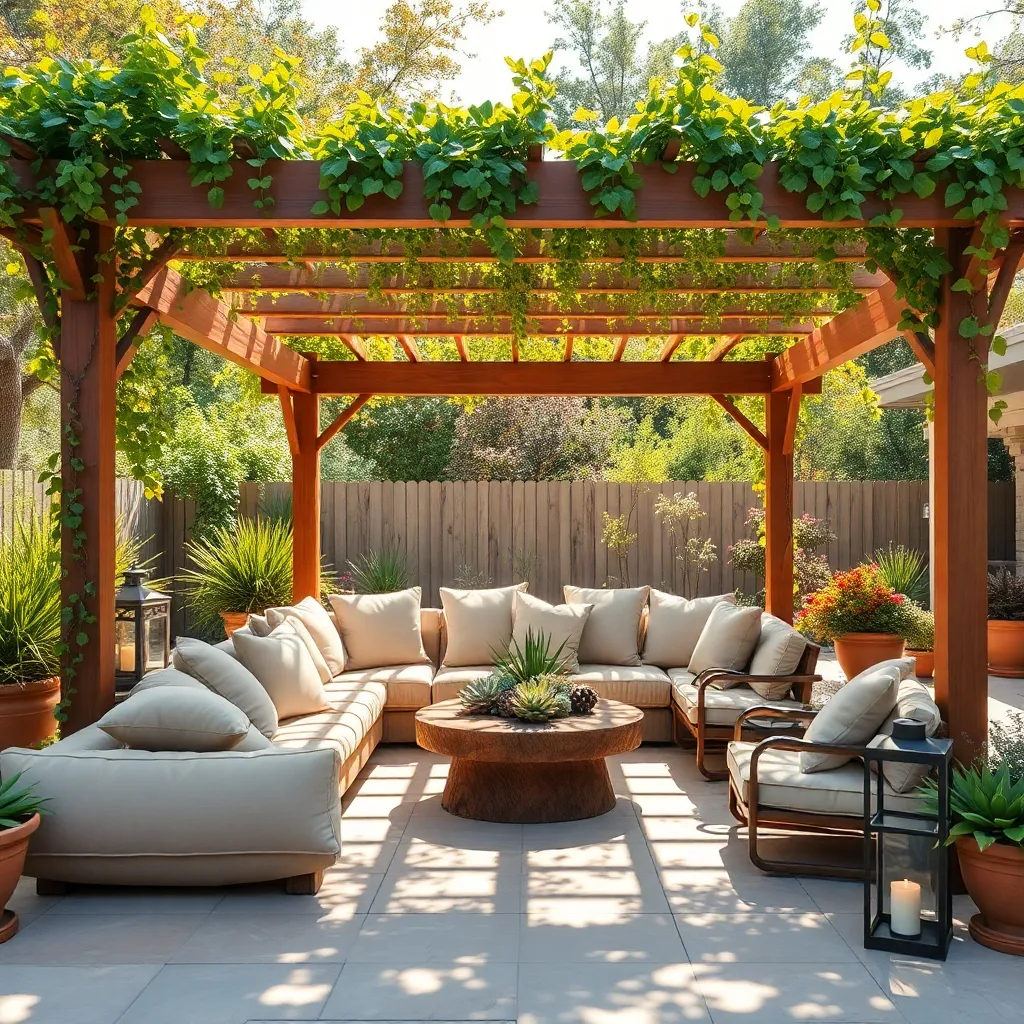
Incorporating comfortable seating into your outdoor shelter can transform the space into a cozy retreat. Start by selecting weather-resistant materials like teak, cedar, or powder-coated aluminum for durability against the elements. Consider plush cushions made from fade-resistant fabrics such as Sunbrella to add both comfort and color. Ensure your seating is positioned to maximize views and natural light, creating a serene spot to unwind.
For a more advanced touch, integrate built-in seating, such as benches with storage, to maximize space and functionality. Opt for ergonomic designs that provide adequate back support and encourage relaxation. To enhance the ambiance, add throw pillows in various textures and patterns. If space is limited, consider modular furniture that can be easily rearranged for different occasions, ensuring flexibility and adaptability in your outdoor haven.
Choose Low-Maintenance Plant Borders
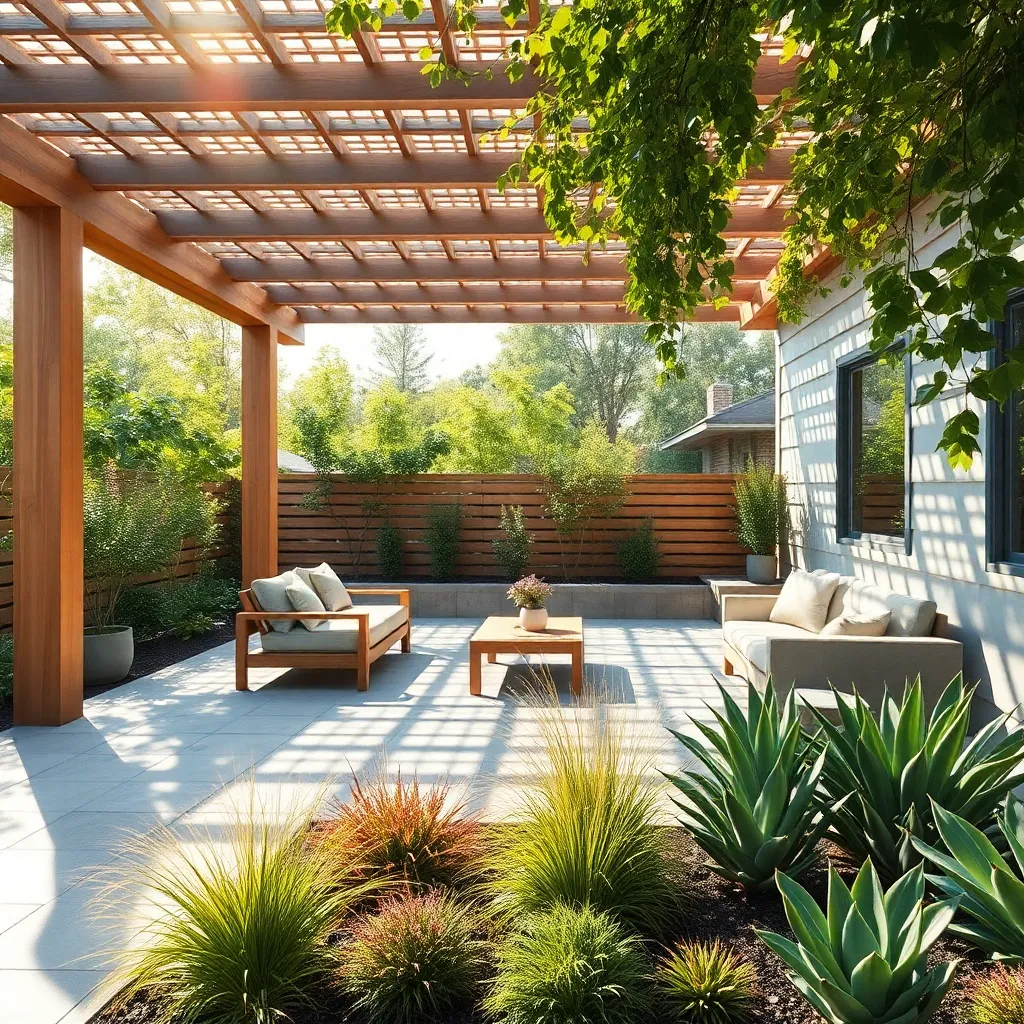
When designing outdoor shelter areas, choosing low-maintenance plant borders can enhance your space while keeping your workload light. Opt for hardy perennials like lavender, hostas, or ornamental grasses, which require minimal care and thrive in various climates. Consider using mulch or decorative stones around these plants to suppress weeds and retain moisture, reducing the need for frequent watering and weeding.
For a more advanced touch, incorporate a mix of texture and color by pairing plants with different foliage shapes and hues. This approach not only adds visual interest but also ensures year-round appeal with seasonal blooms. Select plants with similar sunlight and water requirements to ensure they thrive together, making your plant border both attractive and sustainable. Use native plants where possible to further reduce maintenance needs, as they are better adapted to local conditions.
Add Portable Shade Umbrellas
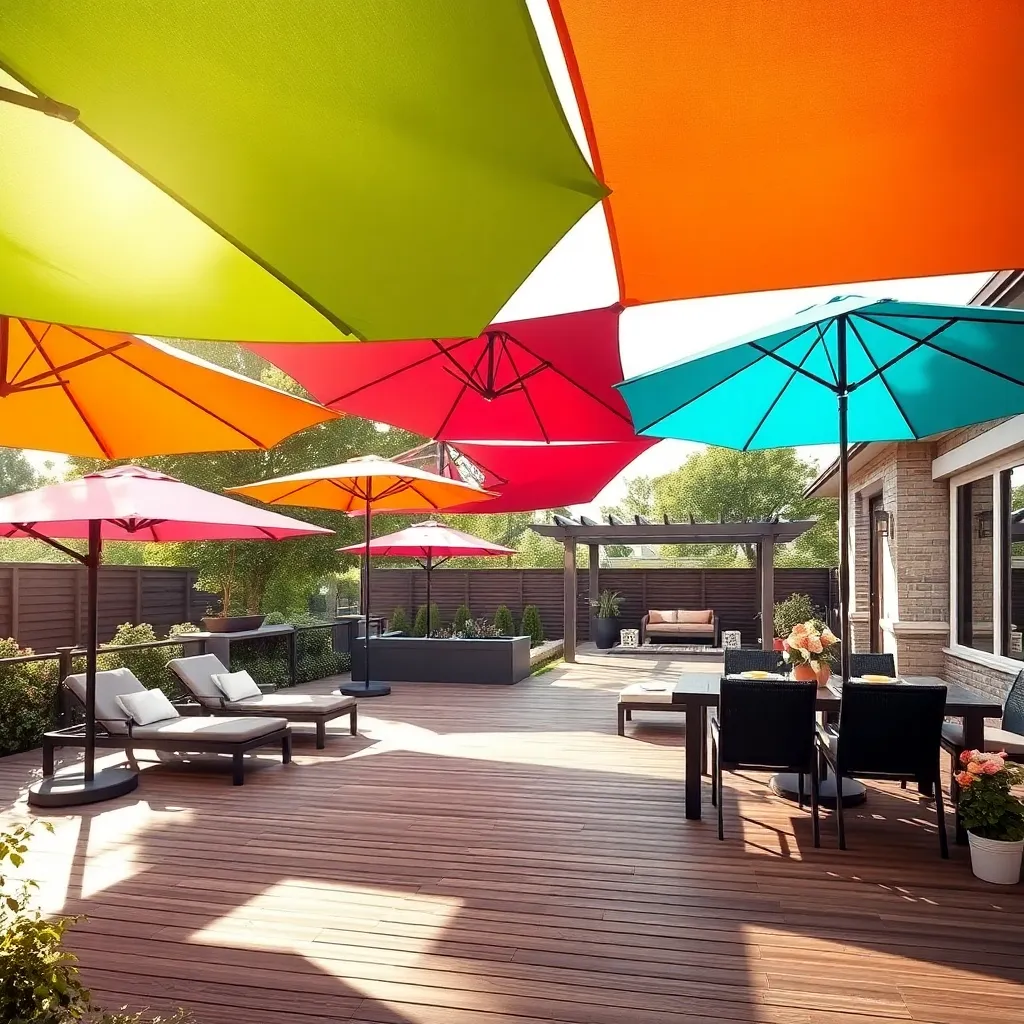
Adding portable shade umbrellas can instantly transform your outdoor space into a cozy haven. Choose umbrellas with a sturdy, rust-resistant aluminum frame for durability, and opt for weather-resistant fabric like polyester or olefin to withstand the elements. A 9 to 11-foot diameter umbrella provides ample shade for most seating areas, creating a perfect spot for relaxation. For those interested in advanced options, consider a cantilever umbrella that offers adjustable angles and 360-degree rotation for maximum flexibility.
Placement is key when incorporating portable shade umbrellas into your design. Position the umbrella to cover the area where you spend the most time, such as over a dining table or near a lounge chair. Ensure the base is heavy enough to prevent tipping; options include weighted bases or those that can be filled with sand or water. For a sleek look, match your umbrella color to your outdoor decor, or choose a bold hue for a vibrant accent. With these simple yet effective adjustments, you can enhance comfort and style in your outdoor retreat.
Install Retractable Awnings for Flexibility
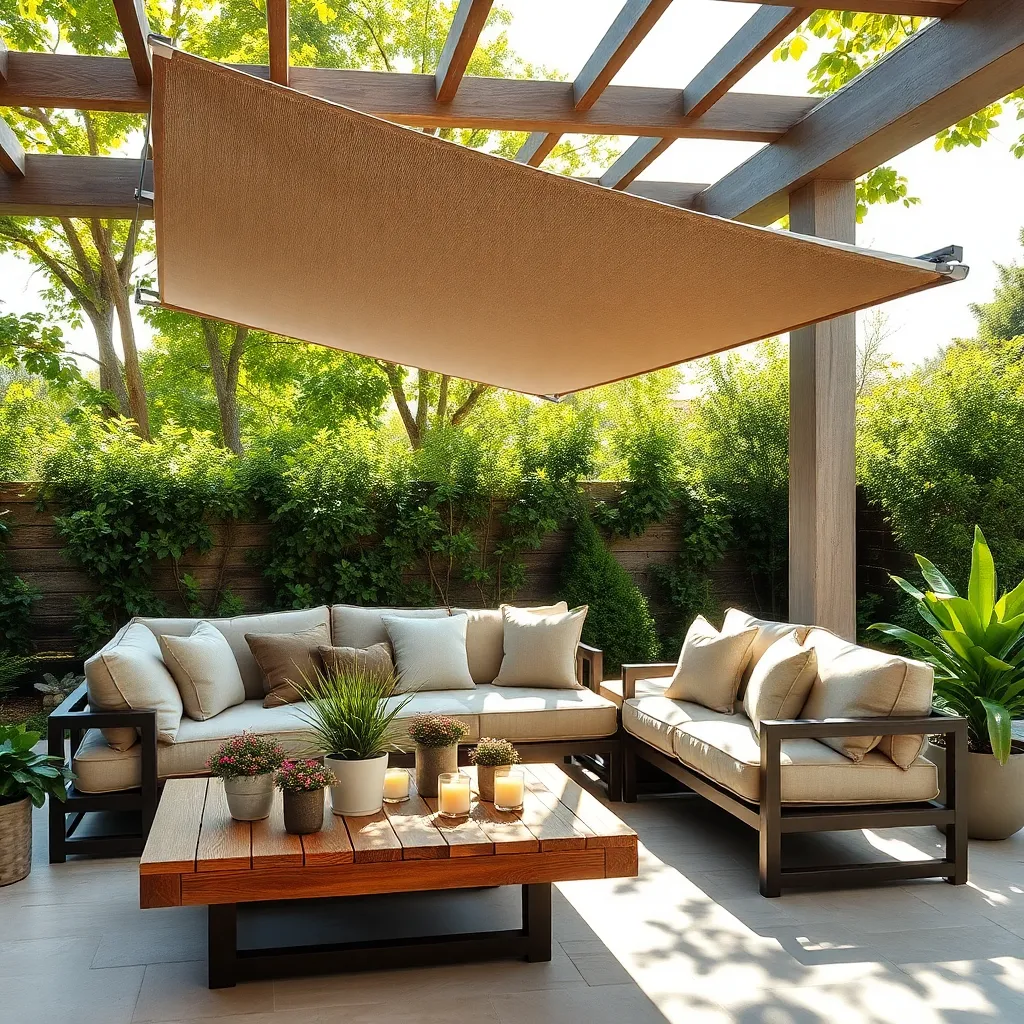
For a versatile outdoor space, consider installing retractable awnings, which allow you to easily control your shade and sunlight exposure. These awnings are perfect for patios and decks, offering the flexibility to extend for full shade during hot afternoons or retract to enjoy a sunny morning. When choosing materials, opt for durable, weather-resistant fabrics like acrylic or polyester, which can withstand various weather conditions and maintain their color. Beginner gardeners will appreciate the simplicity of retractable systems, often available with manual or motorized options for ease of use.
Advanced users can explore additional customization options, such as integrating weather sensors that automatically retract the awning during high winds or rain. Consider the dimensions carefully—a standard awning can extend up to 14 feet, but custom sizes are available to suit unique spaces. Ensure the installation is secure by using high-quality mounting brackets and consulting a professional if needed. The right retractable awning can significantly enhance your outdoor relaxation area, providing comfort and adaptability with just a few adjustments.
Position Loungers with Scenic Views
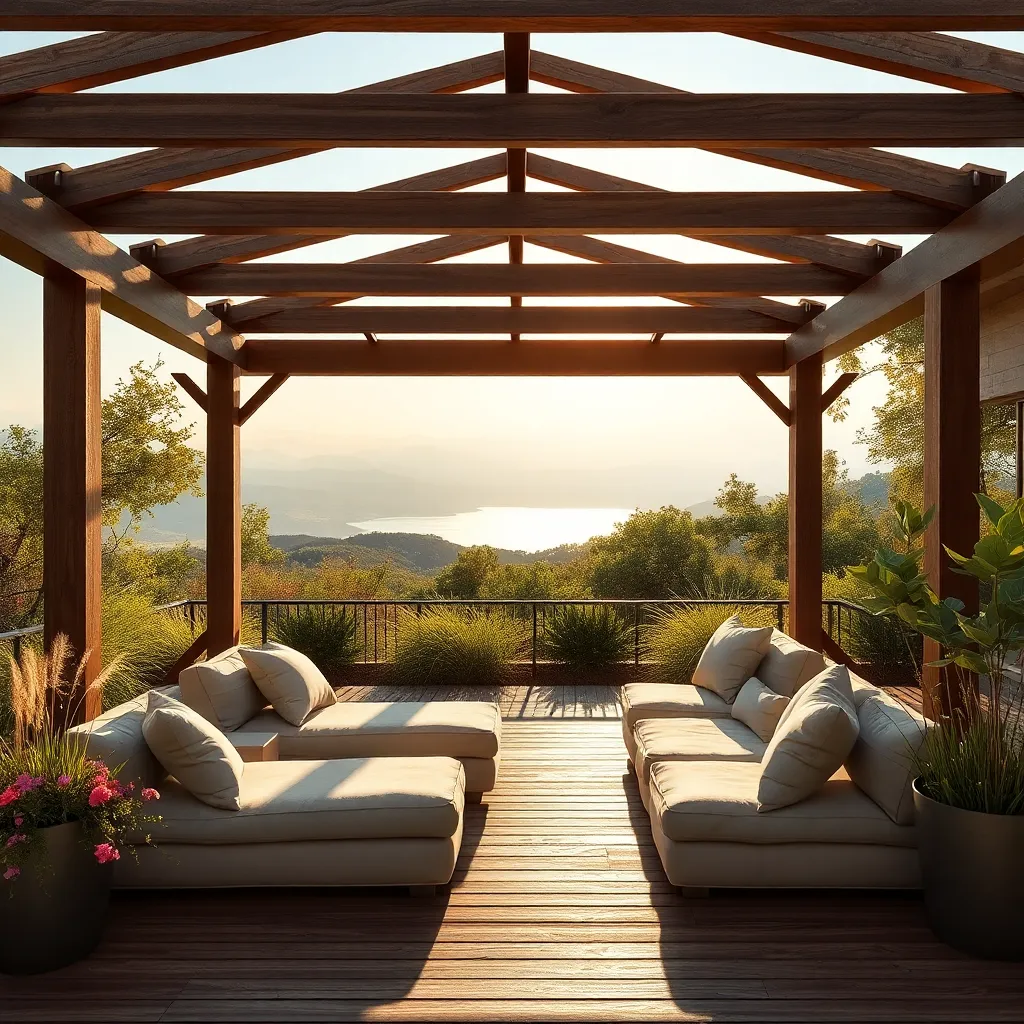
Positioning loungers with scenic views can transform your outdoor space into a tranquil retreat. Place your loungers in areas where they can take full advantage of natural landscapes, such as near flower gardens, water features, or with a backdrop of lush trees. Opt for weather-resistant materials like teak or powder-coated aluminum for durability and easy maintenance. Consider adding plush cushions made from outdoor fabrics, which are both UV-resistant and water-repellent, to enhance comfort and style.
For a more immersive experience, arrange loungers to face the sunset or any unique focal points in your yard, like a beautifully manicured hedge or a striking sculpture. Ensure the loungers have enough space for unobstructed movement, ideally allowing for at least 2-3 feet of clearance around each piece. Advanced gardeners might incorporate pergolas or trellises draped with climbing plants, which not only provide shade but also add a touch of natural elegance. By carefully selecting the positioning and design elements, you can create a lounge area that feels like an extension of your indoor living space.
Arrange Outdoor Cushions for Comfort
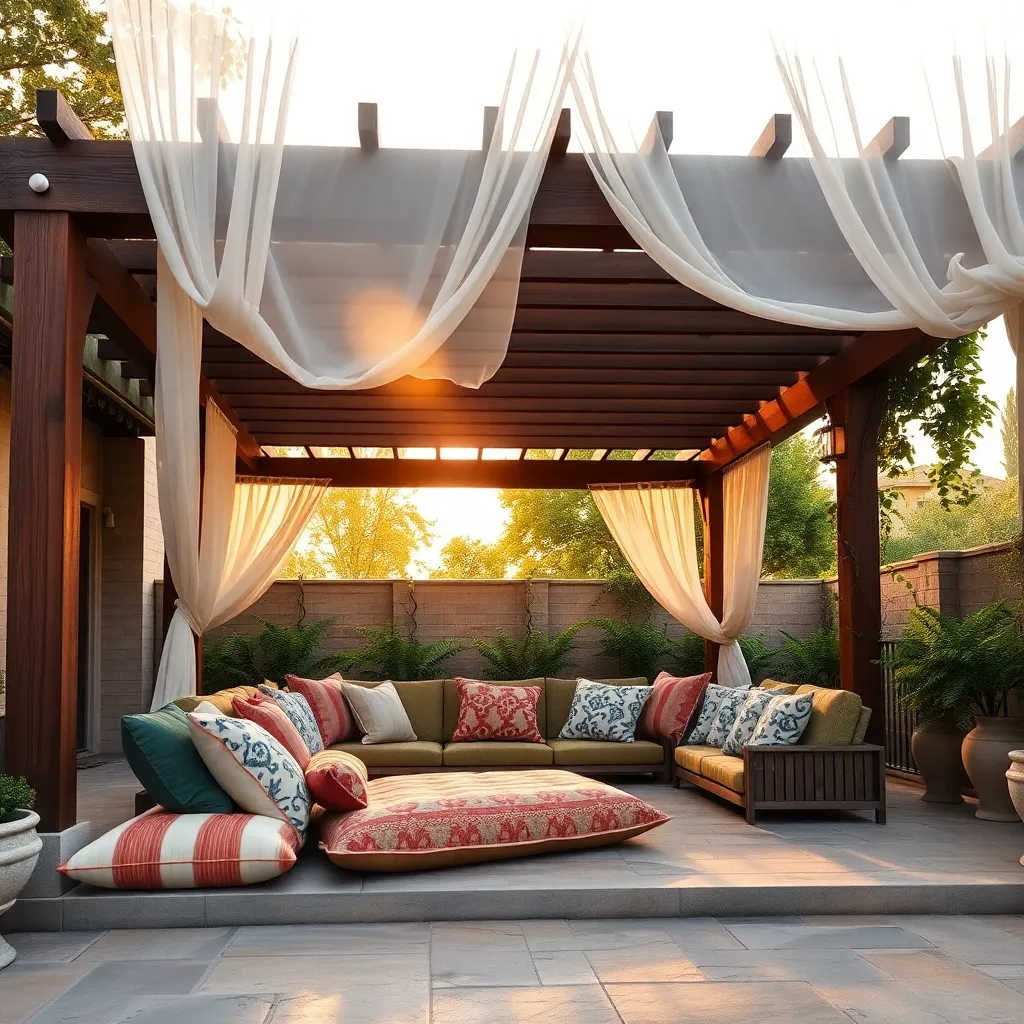
To create a truly comfortable outdoor lounging area, start by selecting cushions made from weather-resistant materials such as Sunbrella fabric, which withstands sun, rain, and mildew. Opt for cushions with removable covers for easy cleaning, and consider choosing vibrant colors or patterns that complement your outdoor decor. Layering cushions of different sizes adds both comfort and visual interest; use larger cushions as back support and smaller ones for armrests or decorative accents.
For an enhanced lounging experience, position cushions strategically to support various sitting positions. Arrange them to provide ample back support for reading or reclining, and add a couple of throw pillows for a cozy touch. Consider adding outdoor poufs or ottomans to serve as footrests, which can double as extra seating when needed. Finally, ensure your cushions are stored in a dry, covered area during inclement weather to prolong their lifespan.
Implement Multi-Functional Furniture Pieces
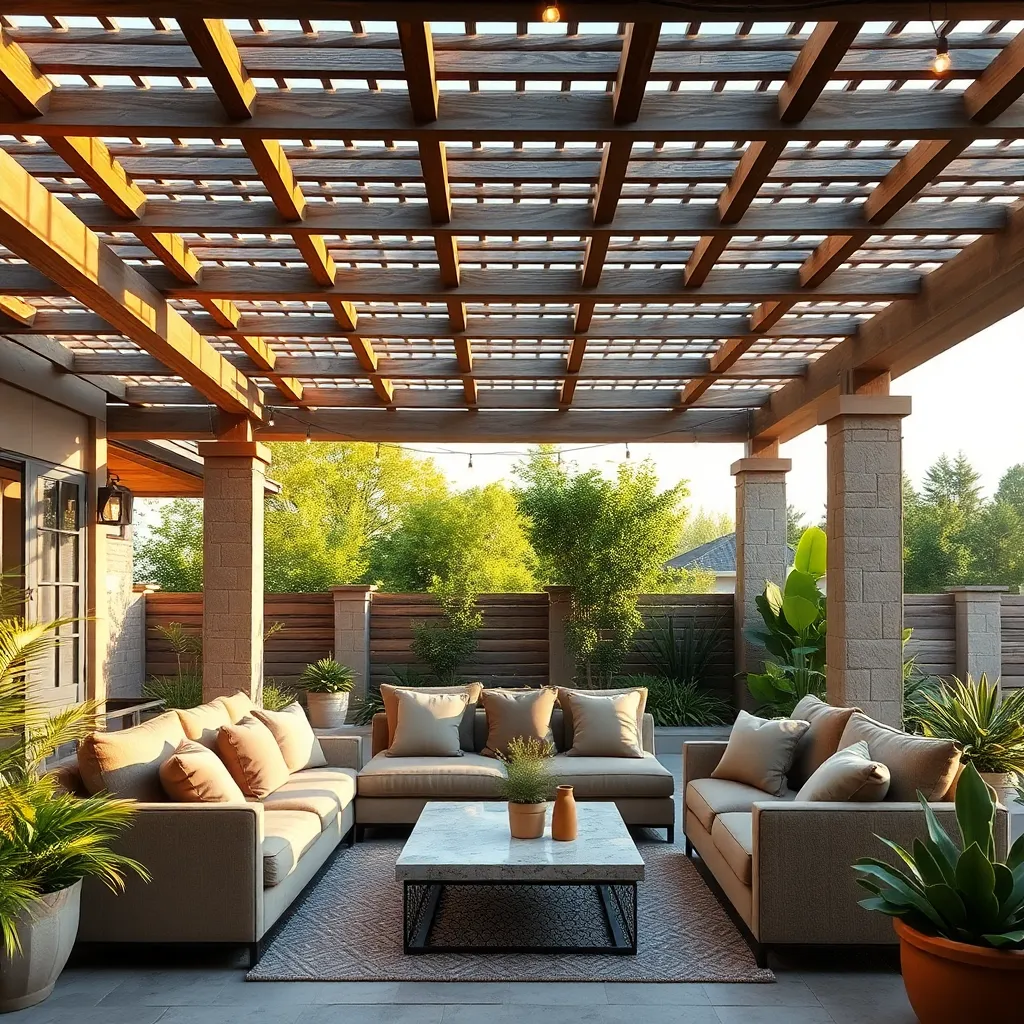
To maximize your outdoor space, consider incorporating multi-functional furniture pieces that serve more than one purpose. For instance, choose a bench with built-in storage to keep garden tools or outdoor cushions neatly tucked away. Opt for a table with adjustable height, which can double as a dining surface or a coffee table, catering to various occasions. Materials like weather-resistant teak or powder-coated aluminum ensure durability and low maintenance, making them ideal for outdoor settings.
Begin by identifying areas where dual-purpose furniture can enhance your outdoor living experience. Modular seating options, such as sectional sofas, allow you to easily reconfigure your layout to accommodate more guests or create a cozy nook for reading. Consider pieces with wheels for effortless mobility, ensuring flexibility in your design. For advanced gardeners, integrating planters into furniture—like a planter bench—creates a seamless blend of function and natural beauty, adding both greenery and seating to your space.
Conclusion: Creating Beautiful Outdoor Spaces
In exploring the “15 Relaxing Spots Ideas for Your Next Project,” we’ve journeyed through diverse concepts that can enrich and rejuvenate your relationship. From creating a peaceful reading nook that nurtures quiet connection to designing a garden retreat that fosters shared growth, each idea serves as a stepping stone towards deeper intimacy. We’ve also highlighted the importance of spaces that encourage open communication, such as cozy corners for heartfelt conversations, and the transformative power of shared experiences in nature.
As you consider these ideas, take a small yet meaningful step today—choose one spot to create or enhance in your home or community that invites relaxation and connection with your loved one. Whether it’s a simple window seat or an elaborate backyard haven, let this be your starting point for cultivating a more serene and fulfilling relationship.
Remember to save or bookmark this article for future inspiration and guidance. Your relationship journey is ongoing, and these ideas will be valuable companions along the way. As you invest time and energy into these spaces, you’re not only nurturing your surroundings but also laying the groundwork for lasting relationship success. Together, let’s create environments that foster love, understanding, and happiness.
